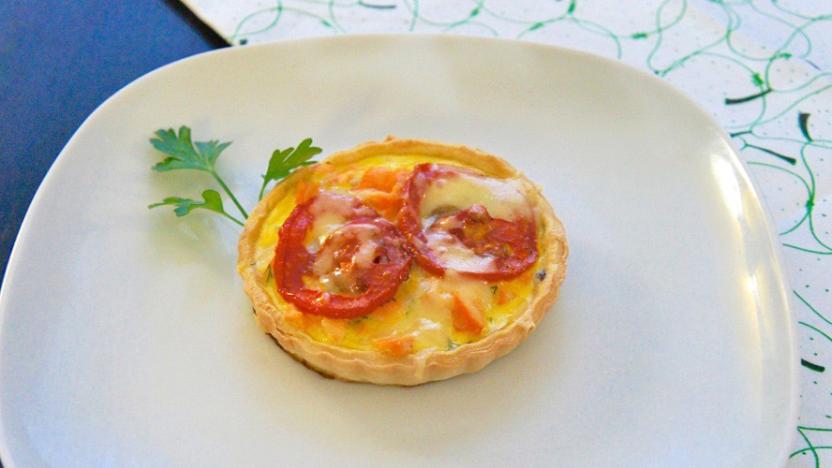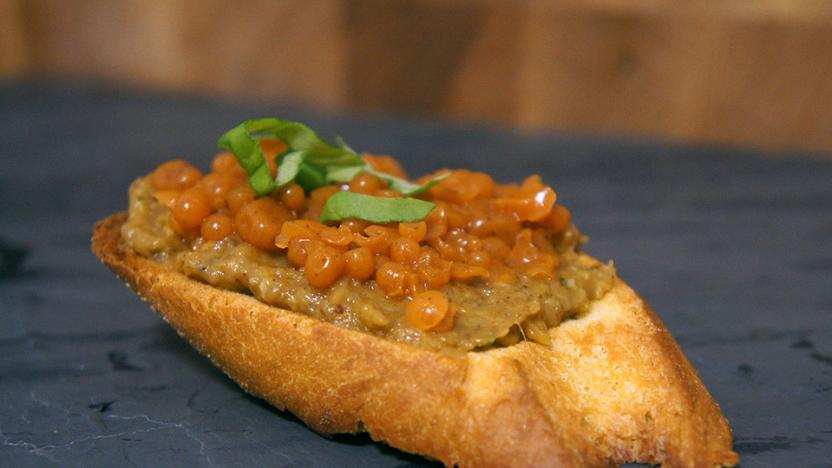ICE
Latest

NASA maps the thawed parts of the Greenland ice sheet
NASA has created the first map of the bottom of the Greenland ice sheet, showing which parts have begun thawing and which remain frozen as ever. This is the first time what's underneath the surface of the massive block of ice has been mapped, because the only access scientists have to it is a few bore holes. They've been trying to find out what's going on underneath for a long time, since it's essential for predicting the sheet's movements in the future. "If the ice at its bottom is at the melting point temperature, or thawed," said NASA Goddard glaciologist and team leader Joe MacGregor, "then there could be enough liquid water there for the ice to flow faster and affect how quickly it responds to climate change."

Russia debuts the largest ever nuclear icebreaker
Russian cargo ships understandably have to wade through a lot of ice, and the country plans to deal with that frozen water in style. It recently floated out the Arktika, which it bills as the "largest and most powerful" nuclear-powered icebreaker in the world. At nearly 569 feet long and 112 feet wide, the twin-reactor boat can carve a gigantic path through some of the sea's toughest obstacles -- it can cut through ice roughly 10 feet thick. It can haul about 36,000 short tons, and there's a helicopter to scout for any upcoming floes.

Egyptian student faces deportation over Trump threat
An Egyptian student studying in California faces deportation after posting a threatening message about Donald Trump on Facebook. 23-year-old Emad Elsayed posted a picture of Trump on FB back in February with a caption to the effect of, according to his attorney, "If I killed this guy I wouldn't mind serving a life sentence and the world would thank me." While this statement seems fairly innocuous compared to the abuse President Obama endures on social media (and most women for that matter), federal agents have since detained Elsayed and are now threatening to deport him.

NASA finds that Pluto has blue skies and surface water ice
Move over Mars, NASA's just confirmed that Pluto, everybody's favorite Kuiper belt object/celestial punching bag, not only has expansive fields of water ice on its surface but blue skies as well. Granted Pluto has neither the thick atmosphere nor global oceans that the Earth does, so the "blue sky" NASA's New Horizon's team spotted last week is actually more of a haze. And, technically, the haze particles themselves would likely appear either red or grey to the naked eye. However, the fact that they appear blue from this distance tells NASA a lot.

The Big Picture: Saturn illuminates the surface of its icy moon
Saturn's moon Enceladus is covered in ice. We already knew that. But what you see above is evidence of just how icy it actually is. The right side of the celestial body isn't illuminated by the sun. Nope, that's actually brightened by the light reflecting off of the adjacent ringed planet according to NASA. If you're looking for something a bit more solar in nature, take a peek at the bright wedge on the moon's left side. The aerospace outfit says that these types of pictures from Cassini are "designed to capture the extended plume of icy material" coming off the moon's south pole.

NASA's latest Pluto discoveries include hazy skies and flowing ice
Ready for another dose of Pluto news? Of course you are! During an event today, NASA shared its latest discoveries in regards to the icy dwarf planet. First, detailed imagery from New Horizon's Long-Range Reconnaissance Imager (LORRI) shows "geologic activity" on the surface that includes flowing ice on a plain known as Sputnik Planum. That area lies in the western part of that massive heart-shaped region you've likely noticed in photos. NASA says the ice there flowed, and may still be flowing now, in a way that resembles the movement of glaciers on Earth. In the southern portion of Sputnik Planum, researchers discovered a range of icy mountains that rise about a mile and can be compared to the Appalachian Mountains here in the States. In fact, the peaks have been informally named Hillary Montes and are located near another range named Norgay Montes. The names are in honor of Sir Edmund Hillary and Tenzing Norgay -- explorers who first reached the summit of Mount Everest in the 1950s.

Watson's spicy, ginger-laced gazpacho
'Cognitive Cooking with Chef Watson' is a collaboration between IBM and the Institute of Culinary Education in New York City. Once a week, as part of an ongoing series, we'll be preparing one recipe from the book until we've made all of them. Wish us luck. So this is how I knew I was in trouble the first time I saw Cognitive Cooking with Chef Watson (which, by the way, only happened after I agreed to cook my way through the book): there's a specific section for home cooks and it's only seven recipes long. This particular section of the book is a bit different from the rest. For it IBM partnered with Bon Appétit and trimmed the reservoir of recipes that Watson was riffing off of to just the 9,000 or so already in the publication's database. The results are much more friendly for those that don't have access to an commercial kitchen, but they're no less interesting from a flavor profile and serve as evidence that even mortal humans can benefit from Watson's creative kick in the pants.

Arctic drone is tough enough to monitor icy waters
Sure, there are already drones out there that can take a bruising, but can they survive the brutally cold Arctic Ocean? Laval University's Argo drone can. The newly developed robotic submersible can reach depths of 6,560 feet as it collects data about organisms in bitterly cold waters, and its laser scanning system helps it avoid ice whenever it returns to the surface to transmit data. Not that Argo needs to poke its head above the water very often -- it can run for up to four years at a time. The machine is still in testing at the moment. If everything goes well, however, the drone will be tracking the biological effects of climate change within a matter of months. [Image credits: AP Photo/John McConnico (top), Claudie Marec/Laval University (bottom)]

Watson's South American spin on a Canadian classic
'Cognitive Cooking with Chef Watson' is a collaboration between IBM and the Institute of Culinary Education in New York City. Once a week, as part of an ongoing series, we'll be preparing one recipe from the book until we've made all of them. Wish us luck. So far we've just been working from the front of Cognitive Cooking with Chef Watson, towards the back. But we're going to start jumping around a bit now. Partially for convenience sake (it's just easier to make all three poutine recipes in a row), but mostly because I want to avoid using my oven as much as possible. It's hot and humid in New York and I live in a small one bedroom apartment. Basically just looking at my oven makes the temperature rise about 20 degrees in here. So we're jumping a few recipes ahead to take on the Peruvian Potato Poutine, a South American twist on a Canadian classic. This is one of the recipes that Watson inspired the chefs from the Institute for Culinary Education to whip up at SXSW in 2014 at their cognitive computing food truck. So, you can sort of think of this as a Chef Watson 1.0 dish.

Cooking with Watson: Caymanian Plantain Dessert
Cognitive Cooking with Chef Watson is a collaboration between IBM and the Institute of Culinary Education in New York City. Once a week, as part of an ongoing series, we'll be preparing one recipe from the book until we've made all of them. Wish us luck. So for the second week in a row, Watson and his culinary interpreters are appealing to my sweet tooth. Except, where last week's pastries had a savory backbone to keep things interesting, the Caymanian plantain dessert is a full-on tooth-rotting sugar bomb. And a damn delicious one at that. Here's the thing about IBM's cognitive computing project: You never know quite what you're going to get. On the surface the list of flavors here seems like an obvious combination, but as chef Michael Laiskonis points out in the accompanying notes, it's in how they all come together. See Watson isn't just about jamming together seemingly incongruous ingredients. The idea is to push human creativity, in whatever area that may be. It just so happens that in this case IBM is trying to broaden your kitchen vocabulary.

Cooking with Watson: Spanish almond crescent
Cognitive Cooking with Chef Watson is a collaboration between IBM and the Institute of Culinary Education in New York City. Once a week, as part of an ongoing series, we'll be preparing one recipe from the book until we've made all of them. Wish us luck. Watson's latest challenge to my self-esteem and sanity, the Spanish almond crescent, is the first dessert in the Cognitive Cooking book. And it's an incredibly challenging one. But, I'll say this up front, if you put in the effort, the payoff is well worth it. These pastries are quite unique and delicious. They're not so surprising that the first bite catches you off guard, like say last week's Swiss-Thai asparagus quiche. But that's a good thing. These little puffs of sweet and savory are different, but approachable; unfamiliar, but comforting.

Cooking with Watson: Swiss-Thai asparagus quiche
Cognitive Cooking with Chef Watson is a collaboration between IBM and the Institute of Culinary Education in New York City. Once a week, as part of an ongoing series, we'll be preparing one recipe from the book until we've made all of them. Wish us luck. Another week, another quiche. I can't say I went into this one with high hopes after last week's funky salmon number. But, at least there is no fish here. Instead you've got a dash of Southeast Asian flavors, some asparagus and a buttery, flaky crust. This is pretty much a variation on the formula that produced Watson's biggest success, the turmeric paella -- combine the flavors of one region, with the presentation of another, and voilà! The Swiss-Thai asparagus quiche puts the flavors of Thailand (and a hint of Greece) in an open-top custard pastry often associated with French cuisine. And once again, IBM's cognitive computing efforts succeed in pushing its human chef interpreters to make something unique.

Cooking with Watson: Scandinavian salmon quiche
Cognitive Cooking with Chef Watson is a collaboration between IBM and the Institute of Culinary Education in New York City. Once a week, as part of an ongoing series, we'll be preparing one recipe from the book until we've made all of them. Wish us luck. Sometimes, the ingredient lists for these Watson recipes read like a Chopped contestant's worst nightmare. Inside the basket you will find: tart shells, gruyere, sour cream and salmon filets. Almost any time you mix cheese and fish, you know you're in trouble. (Update: I acknowledge that both tuna melts, and bagels with cream cheese and lox are rare exceptions to this rule.) But, if anyone is capable of taming the culinary cruelty of Watson it would be the brilliant minds at the Institute of Culinary Education, like Florian Pinel and Michael Laiskonis. So, even though the idea of a Scandinavian salmon quiche is a little off-putting, I put my faith in the human interpreters to steer me and my captive taste testers in the right direction.

Cooking with Watson: Italian grilled lobster
'Cognitive Cooking with Chef Watson' is a collaboration between IBM and the Institute of Culinary Education in New York City. Once a week, as part of an ongoing series, we'll be preparing one recipe from the book until we've made all of them. Wish us luck. I've got to say I am pretty against the idea of wrapping lobster in bacon. While, yes, bacon does tend to make everything better, I'm also a bit of a purist. I don't like butter or onions in my hamburgers, or mignonette on my oysters. These are foods meant to be enjoyed as they are. And I feel the same about lobster. It is meant to be steamed and devoured as is (or with some drawn butter and lemon if you really must). But, I have a job, and right now that job is to cook whatever Watson tell me to. So it's time to defile one of the most delicious (and expensive) sea creatures with bacon and a lot of citrus.

Cooking with Watson: Indian turmeric paella
'Cognitive Cooking with Chef Watson' is a collaboration between IBM and the Institute of Culinary Education in New York City. Once a week, as part of an ongoing series, we'll be preparing one recipe from the book until we've made all of them. Wish us luck. So, here's a question: Is it still a paella if it doesn't involve olive oil or saffron, and doesn't generally represent the flavors of Spain? At what point does it become a pilaf or, since this particular recipe is brimming with spices from the Indian subcontinent, a biryani? Really the only discernible quality that this Indian turmeric paella has that screams "paella" is the presence of socarrat -- the toasty, browned rice that sits at the bottom of the pan. Oh, and the presentation. And so, here we go again, Watson and his human interpreters from the Institute for Culinary education take a seemingly familiar dish and, with a little computer-generated nudge, create something wholly unfamiliar.

Cooking with Watson: Austrian asparagus and pigs' feet croquettes
'Cognitive Cooking with Chef Watson' is a collaboration between IBM and the Institute of Culinary Education in New York City. Once a week, as part of an ongoing series, we'll be preparing one recipe from the book until we've made all of them. Wish us luck. "Austrian grilled asparagus." That should be simple. Let's see... Pigs' feet? Sous vide? Croquettes? Mustard "foam"? Damn it Watson! Well, if the carrot pearls from last week weren't sufficiently weird for you, fear not. This week's recipe is the sort of thing that would send most casual cooks running for the hills. And to make matters worse, the title lulls you into a false sense of security. The first two steps in this recipe, that's theoretically for grilled asparagus, are to brine two pigs' feet overnight, then to cook them in a 162-degree water bath (sous vide) for 24 hours. Yes, 24 hours. Between the eight-plus-hour brine and the 24-hour cook, this is already the most time-intensive dish I've ever made.

Cooking with Watson: Turkish Bruschetta with carrot pearls
'Cognitive Cooking with Chef Watson' is a collaboration between IBM and the Institute of Culinary Education in New York City. Once a week, as part of an ongoing series, we'll be preparing one recipe from the book until we've made all of them. Wish us luck. Let's get a couple of things straight: Watson, the IBM supercomputer famous for spanking Ken Jennings on Jeopardy, did not really write these recipes in the purest sense of the word. Rather, IBM trained it by feeding it a giant database of recipes, studies on what flavors and smells people find pleasant and information on the chemical compounds found inside ingredients. Using this, Watson is able to suggest dishes with surprising flavor combinations. From there the computer passes the baton to a human being, in this case James Briscione and Michael Laiskonis from the Institute of Culinary Education (ICE), who use the ingredient lists and style suggestions as inspiration for new dishes.

DHS seeks bids for access to license-plate tracking systems
The Department of Homeland Security wants access to data about when and where suspects have traveled, and it could get that information from a license-plate tracking system. According to The Washington Post, the DHS first sought a private company that gathers location data in February last year. But it soon pulled back because of the backlash from advocates of privacy and civil liberties who pointed out that access to a commercial tracking system would allow field officers to pinpoint the location of millions of citizens who commute everyday. Now, a year later, the DHS is back with a new solicitation – that this time it says can both meet its goal and protect citizen privacy.

Trove introduces the Ice Sage
It's that time of year again when the days are shorter, the weather is colder, and a disproportionate number of songs playing everywhere you go relate to ice crystals covering the ground. (Unless you live south of the equator, in which case you're just wondering what we're on about.) To accompany the winter weather, voxelbox MMORPG Trove has introduced its newest class, the Ice Sage. You can probably guess what that one's all about; the name is not exactly a mystery. Ice Sages chill enemies with their basic attacks and avoid slipping on icy surfaces. They can also summon icicles, absorb attacks, and create a deep freeze in their immediate area to freeze and damage enemies. If that sounds cooler than being cool, you can pick the class up in the in-game store now.

The Big Picture: our clearest view yet of Europa, Jupiter's icy moon
It's going to be a long, long time before anyone gets to see Jupiter's moon Europa first-hand, but NASA's Jet Propulsion Laboratory just provided the next best thing. It has released a "remastered" image of the icy celestial body that shows what it would look like to the naked eye. NASA's Galileo probe snapped the original photo mosaic (using near-infrared, green and violet filters) back in the 1990s, but they've been put through modern image processing techniques that simulate visible light wavelengths.







